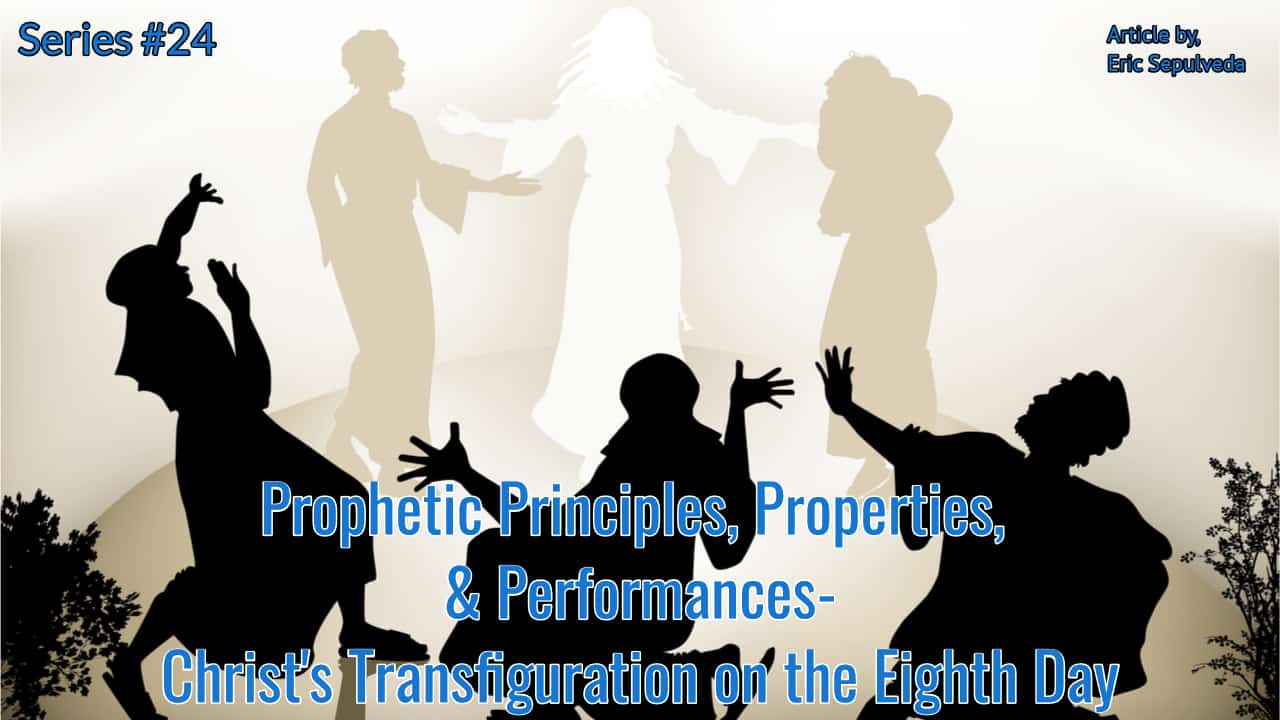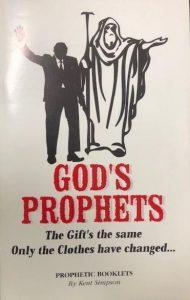
Prophetic Principles, Properties, & Performances-
Christ’s Transfiguration on the Eighth Day
Though Sukkot was a seven day festival, on the eighth day, they were required to have an additional day set aside as a separate special event. This day not only marked the moment when Christ publicly revealed Himself to the World, but also the day of His Transfiguration.
Sukkot was considered the most joyous time of the year and as a Fall Harvest Festival was comparable to Thanksgiving. There were two well-known celebrations that had been incorporated into the Sukkot ceremony over generations. The Water Libation Ritual and the Lighting of the Candelabra both took place in the Women’s Courtyard, which made both processions completely available to the public.
The Water Libation ceremony involved a priest drawing water from the Pool of Siloam, which was fed by the Gihon Spring, which ran under the City of David. This spring was the same one where King Solomon was anointed by High Priest Zadok (1 Kings 1: 38-39) and was reminiscent of how King David would be the source of the Messiah’s lineage, but also how the Messiah would be a source of life to the Nation of Israel and eventually the World. The priest would take the water from the spring and pour the water and wine together onto the altar as a plea to G3D to send the showers in the upcoming rainy season.
It was a prophetic performance foretelling the moment after Christ’s death on the Cross, when a soldier pierced Jesus’ side with a spear and immediately there spilled out both blood and water (John 19:33-34). This was a fulfillment of G3D’s declaration that He would “pour out on the House of David and the inhabitants of Jerusalem the Spirit of Grace and Supplication, and they will look on me, the one they have pierced”. While the onlookers were praying for physical water, G3D had intended to send His Spirit upon His People.
The only descriptions we have of the Lighting of the Candelabra come from the Talmud which stated that “Men of piety and good deeds would dance… with lighted torches in their hands, singing songs and praises. Levites without number with harps, lyres, cymbals, trumpets, and other musical instruments (were) there upon the fifteen steps leading down from the Court of the Gentiles to the Court of the Women.” (Sukkah 51 a-b; 53a) Supposedly, seventy-five foot high candlesticks were erected in front of the Temple, whose light could be seen in every courtyard of the city.
After the week-long celebration, on the eighth day, the entire country rested and gathered at the Temple. It was during the water libation ceremony that Christ stood and said in a loud voice “Let anyone who is thirsty come to me and drink. Whoever believes in me, as Scripture has said, rivers of Living Water will flow from within them” (John 7: 37-39). Also on the eighth day He declared in front of the giant candle in front of the Temple “I am the Light of the World. Whoever follows me will never walk in darkness, but will have the Light of Life” (John 8:12)
Also on the eighth day, Jesus brought Peter, James, and John to the Mount of Olives (John 8:1) to pray. It was there that Jesus was transfigured before them, His Face shining like the sun, and His Clothes were as white as Light. Moses and Elijah appeared before them as well.
One of the most significant virtues practiced during Sukkot was the concept of Ushpizin. Though it did not receive its name or become fully conceptualized until after the Destruction of the Second Temple, Ushpizin was the anticipation that guests would arrive at your shelter and you would have the blessed opportunity to attend to and provide for them. Some version of this practice might have existed in the First Century since Peter upon seeing all this responded “Lord, it is good for us to be here. If you wish, I will put up three shelters-one for you, one for Moses, and one for Elijah”.
A bright cloud covered them and a Voice from the cloud declared “This is My Son, whom I love; with Him I am well pleased. Listen to Him!”
Earlier in the week, while the crowds were clamoring to hear His Teachings and see His Miracles, there were whispers about who Jesus truly was. When Jesus asked His Disciples, they repeated the rumors that had been spread, but Peter recognized that Jesus was the Messiah, the Son of the Living G3D (Matthew 16:13-20; Mark 8:27-30; Luke 9: 18-20). Christ’s Transfiguration not only confirmed this, but also showed that Jesus was G3D Himself. The Sons of Thunder would have realized later that while Moses face shown brightly after coming down the mountain after talking with G3D, Jesus was not reflecting G3D’s light, but was the source of it.
Like the Spring Feasts, Passover and Pentecost, which revealed Christ’s identity as the Body of G3D and the Final Offering, and was the moment that the Spirit first became available to all Mankind, Sukkot was the revealing of G3D’s Glory, which had been dwelling in Jesus’ Tabernacle. G3D used the newly added Jerusalem Temple ceremonies to further prove who He was to the audience that had gathered from all over the world to participate in the mandatory Fall Feast.
The eighth and greatest day of Sukkot was the day that G3D decided to reveal Himself to the entirety of Israel through His Son, through His declarations that He was the Source of Living Water and the Light of the World. Though Apostle Peter had understood that Jesus was the Messiah just a few days earlier, it was during the Transfiguration that the Disciples realized that Jesus was the G3D of Israel as well.
During this Season of Sukkot, Believers need to recognize that the festival was not about living in tents, as Peter originally thought, but how the Presence of G3D dwelt within the first Tabernacle. Likewise, the Messiah was the True Source of Light and Living Water to not only Israel, but the whole World.
Prepared by, Kent Simpson, Apostolic Prophet & Eric Sepulveda, PMT Administrator
For more prophetic media groups click here


